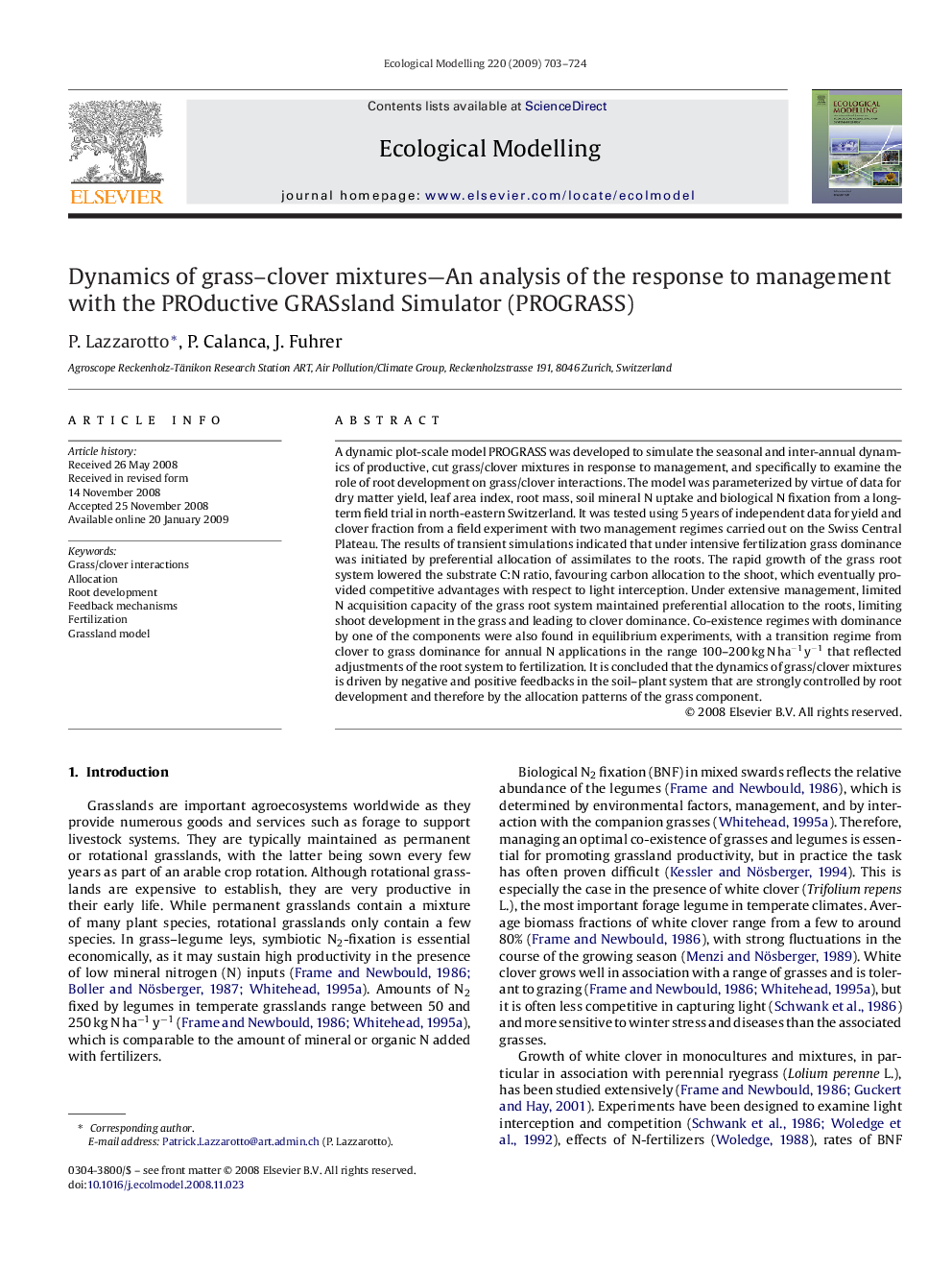| Article ID | Journal | Published Year | Pages | File Type |
|---|---|---|---|---|
| 4378199 | Ecological Modelling | 2009 | 22 Pages |
A dynamic plot-scale model PROGRASS was developed to simulate the seasonal and inter-annual dynamics of productive, cut grass/clover mixtures in response to management, and specifically to examine the role of root development on grass/clover interactions. The model was parameterized by virtue of data for dry matter yield, leaf area index, root mass, soil mineral N uptake and biological N fixation from a long-term field trial in north-eastern Switzerland. It was tested using 5 years of independent data for yield and clover fraction from a field experiment with two management regimes carried out on the Swiss Central Plateau. The results of transient simulations indicated that under intensive fertilization grass dominance was initiated by preferential allocation of assimilates to the roots. The rapid growth of the grass root system lowered the substrate C:N ratio, favouring carbon allocation to the shoot, which eventually provided competitive advantages with respect to light interception. Under extensive management, limited N acquisition capacity of the grass root system maintained preferential allocation to the roots, limiting shoot development in the grass and leading to clover dominance. Co-existence regimes with dominance by one of the components were also found in equilibrium experiments, with a transition regime from clover to grass dominance for annual N applications in the range 100–200 kg N ha−1 y−1 that reflected adjustments of the root system to fertilization. It is concluded that the dynamics of grass/clover mixtures is driven by negative and positive feedbacks in the soil–plant system that are strongly controlled by root development and therefore by the allocation patterns of the grass component.
